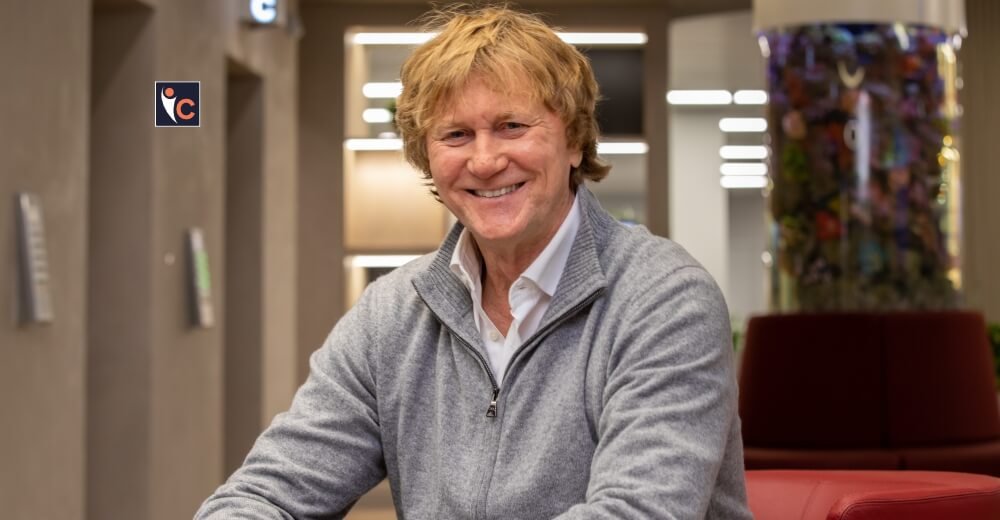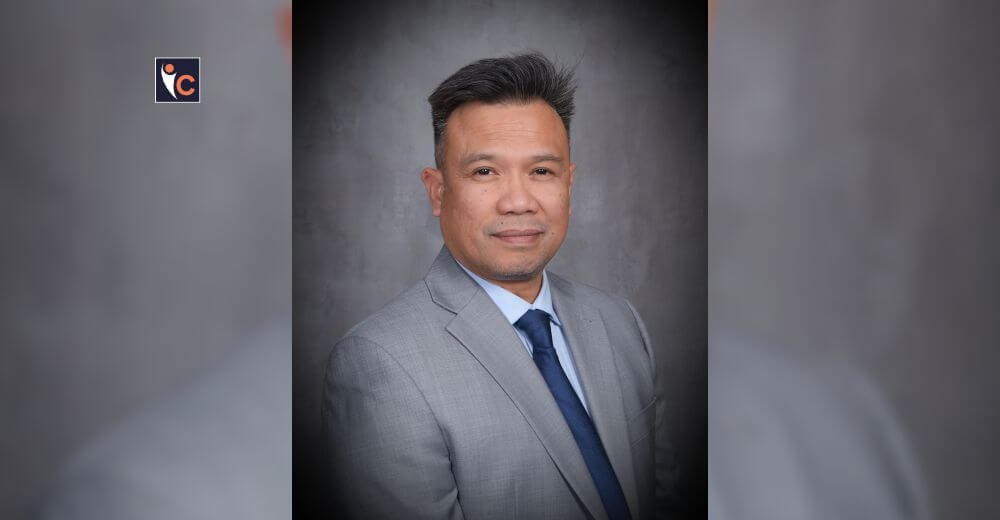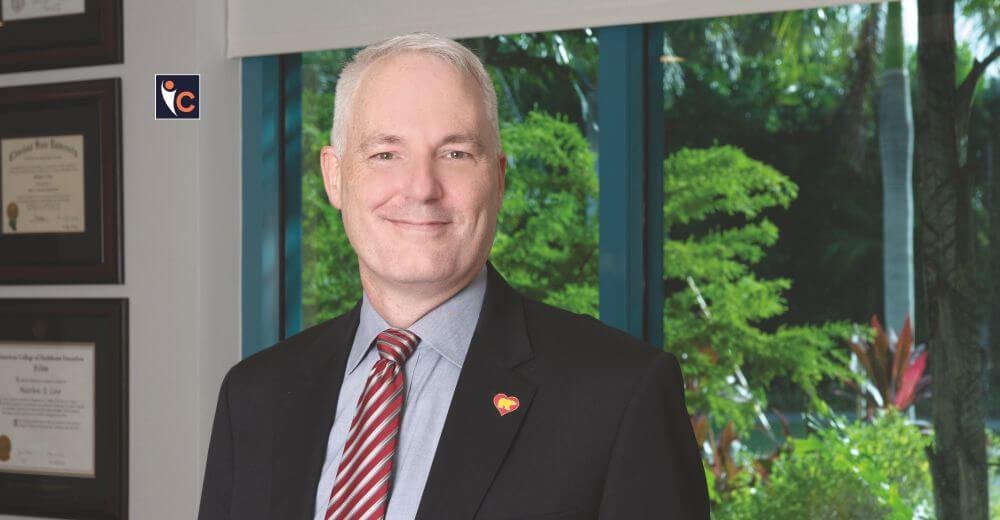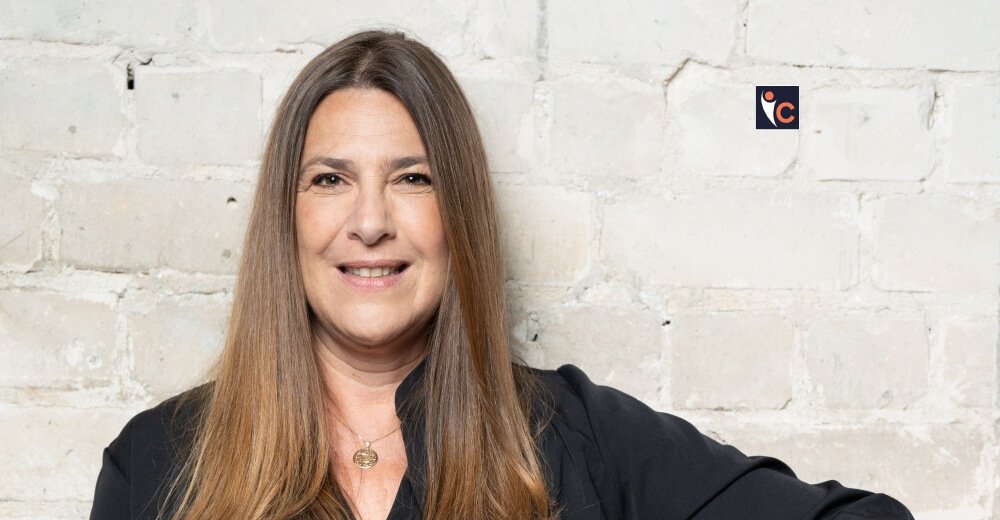Today, the role of educators is rapidly evolving. No longer centered solely on imparting knowledge, it is becoming increasingly essential to embrace an inclusive and student-centric approach. Understanding the unique challenges faced by students and learning how to effectively address them holds the key to their success.
Meet Christopher Smith, EdD, the revolutionary Director of Diversity, Equity and Inclusion at Arkansas Colleges of Health Education. With an unwavering belief in the power of diversity and inclusion, Dr. Smith is leading a movement to create a more just and equitable society. His passion for this transformative vision stems not only from his personal experiences but also from years of dedicated work in higher education.
For Dr. Smith, diversity is not merely a buzzword; it represents the untapped potential within each individual. His utmost commitment lies in cultivating a world where every voice is heard, valued and included. Through his trailblazing efforts, he is championing a future where true diversity can flourish and become the driving force behind progress.
Let’s dive in to understand the pioneered paradigm shift of Dr. Smith in detail:
Passion for Social Justice
Dr. Smith is a passionate advocate for social justice. He is committed to creating a more equitable world with his education and experience. He is a role model for others, and his work has positively impacted many people’s lives. He is committed to using his education and experience to create a more just and equitable world. His work has positively impacted many people’s lives, and he continues to inspire and lead others.
Dr. Smith is a Southwest Arkansas native who was raised to value family, fortify relationships, and serve as an advocate for those in need. His journey has been anchored in utilizing education to create change for himself and the community he serves.
Dr. Smith attended three Arkansas institutions for his undergraduate and graduate degrees before earning his Doctor of Education in organizational change and leadership from the University of Southern California. With his knowledge of organizational change and leadership, Dr. Smith has served as a dean of students and acting provost at an institution of higher education. In these roles, he has advocated for institutional stakeholders and created opportunities for success.
The Institution
Arkansas Colleges of Health Education (ACHE) is a private, not-for-profit institution with three schools: Arkansas College of Osteopathic Medicine, the ACHE School of Physical Therapy, and the ACHE School of Occupational Therapy, Master of Science in Biomedicine, and Master of Public Health. The services of ACHE articulate through its mission to educate and train a diverse group of highly competent and compassionate healthcare professionals, to create health and research support facilities, and to provide healthy living environments to improve the lives of others.
As Chief Diversity Officer, Dr. Smith’s mission is to connect ACHE’s mission of educating and training a diverse group of highly competent and compassionate healthcare professionals with underrepresented populations within the state of Arkansas and the surrounding states. He does this by working with an outstanding, talented and dedicated group of professionals who share their division’s and institution’s vision and objectives.
Dr. Smith believes, listening intently to gain complete understanding and trust from his colleagues is vital. He also believes that it is important to inquire where his expertise and perspective are needed and begin building bridges of opportunity for those who need ACHE’s services the most.
Dr. Smith is a transformative leader in diversity, equity, and inclusion. He is committed to creating a more just and equitable world, and he is working to make ACHE a leader in this area.
Taking Initiatives for Students’ Bright Future
Dr. Smith’s role as chief diversity officer entails developing strategies to improve ACHE students’ recruitment, retention, and academic success, as well as developing new policies and initiatives and monitoring practices that demonstrate ACHE’s commitment to a welcoming, inclusive environment for its institutional stakeholders.
He enjoys working with administration and faculty to create new and long-term plans for diversity, equality, inclusion, anti-racism, and anti-bias themes across the curriculum for all students and professional development for teachers and staff.
Leadership Insights
According to Dr. Smith, compassion is a cornerstone in healthcare that should be at the center of every healthcare practitioner, from entry-level to president and CEO. Diversity and inclusion play an equally vital role and should be recognized as such. When healthcare professionals appreciate diversity and inclusion, it resonates with the people Dr. Smith and his team have committed to teaching, healing, and serving. Diversity and inclusiveness provide a fresh perspective and admiration for others who look, worship, love, think, and learn differently than we do.
He goes on to say that ACHE’s distinctions strengthen the healthcare system and this country by providing unique experiences and inventive solutions to today’s and future concerns. Organizations’ leadership must focus intently on being more diverse, equitable, and inclusive in order to obtain and maintain a competitive edge in the market. The immeasurable value of diversity and inclusion contributes to a greater sense of belonging and improved retention amongst all organizational stakeholders, positively impacting all, especially underserved communities.
Once organizations focus on the contemporary political depiction of diversity and inclusion, their efforts will become performative or terminated. Diversity and inclusion are not designed or intended to reject but to galvanize communities toward a common goal. For organizations in healthcare, the goal is to heal all and do no harm. The goals and mission of organizations must include diverse and inclusive input and outcomes, or they will not reach their full potential. It is worth mentioning that diverse and innovative thoughts and initiatives can cure cancer, recruit more underrepresented minorities as healthcare professionals, or incorporate new technologies for more ability-inclusive equipment. “As leaders, it is essential to create those opportunities for access and ensure all voices are heard without reprimand or alienation,” says Dr. Smith.
Prioritizing Tech Transformation
ACHE’s technical advancements are achieving its objectives. When discussing equality and inclusion, both concepts must be used interchangeably. Equity is the provision of resources and assistance to individuals in order for them to prosper. The crucial term is “they.” Management can give students the tools they need to become highly trained healthcare providers for its institutional stakeholders. ACHE is advancing well to provide a premier education in state-of-the-art facilities, whether it is through research articles from the institute’s library, high-speed wi-fi on campus and in on-campus housing, closed captioning for synchronous and recorded lectures, or professional development, to name a few. For Dr. Smith’s office, it is imperative to communicate virtually with institutions across the state, region, and country.
Solving Challenges
One of the most significant problems that many DEI leaders encounter is the negative political discourse that portrays diversity and inclusion, leading to individuals rejecting opportunities to adopt diversity and inclusion. Dr. Smith, on the other hand, is glad that his organization values diversity and inclusiveness. ACHE recognizes the significance of educating competent healthcare workers capable of engaging with different populations and providing the required treatment and services.
Dr. Smith’s institution recently adopted a DEI strategy plan that focuses on four major areas: DEI education and training, recruiting and retention, community involvement and presence, and finance. Furthermore, my office uses the Center for Global Inclusion’s Global Diversity, Equity, and Inclusion Benchmarks, which are completely important in aligning his office’s strategic plan with the institutional goal.
According to Dr. Smith, when creating growth opportunities, organizations have biases, also known as preferences. He finds it worth noting that educating his colleagues and institutional stakeholders about biases is a human function. It is on how people react to or express those biases that organizations should focus. In sharing that biases can harm others if left unchecked, Dr. Smith asserts, “I can share reasons for biases and strategies to reduce any reactions or assumptions that are not true. In addition, those within my organization embrace several opportunities for growth because we are a family, and we understand that our mission is the guiding light for us as we work diligently to address health disparities within underserved communities.”
Keys to Achieving Constant Growth
Dr. Smith remarks that acquiring and sustaining support from his institution’s stakeholders, which include the president, members of the C-suite, the board of trustees, teachers, staff, community members, and, most importantly, students, has been wonderful. It is critical for a leader to listen first and talk last. He believes that listening to acquire information and knowledge, while being humble throughout the communication process, would result in a stronger and more accepting atmosphere. The rationale for this is that you do not always have to be correct or demonstrate your intelligence. With this in mind, one often listens to reply rather than learn.
“In leadership, deciding to serve the mission and vision of your organization is critical. In addition, educating yourself on styles of leadership, effective communication, organizational behavior and change, unconscious bias, and inclusive workplace practices can transform you and your organization as change agents within your respective fields,” says Dr. Smith.
Dr. Smith analyzes his job description at least twice a year to identify areas of success and development in order to stay current on particular tasks. Dr. Smith admits he is his worst critic, but asking trustworthy colleagues how he is doing is beneficial. It promotes discourse by soliciting such critiques. He says, “If you separate your initial emotional response from the feedback, you can synergize the two or more assessments and remain a positively impactful leader.”
Furthermore, Dr. Smith evaluates his office’s collaborative efforts with institutional stakeholders, i.e., office, department, colleague, or community members he has not previously worked with. He thinks that matching his resources and knowledge with the aspirations of all institutional stakeholders is smart business, and that ignoring or legislating them away is incorrect and unfair to everybody.
Embrace Curiosity
Dr. Smith advises aspiring entrepreneurs and enthusiasts to ask and answer the question, “Why?” Why are you interested in diversity and inclusion? If your approach is not to broaden your knowledge or welcome all clients because you are aware of the restrictive practices or services you provide, then avoid diversity and inclusion. He asserts, “Embracing diversity and inclusion is not for those who desire to profit without reallocating funds or resources back into marginalized communities or increasing one’s social media presence.”
Another point Dr. Smith adds to consider is avoiding the fear of making a mistake in terms of diversity and inclusion, such as misgendering a patient, client, or stranger or making assumptions based on stereotypes. He asserts that while it is inevitable that you will make a mistake, viewing the mistake as a chance to learn and improve is critical to your advancement. Dr. Smith advises anyone interested in expanding their company’s portfolio to ingest information from trustworthy publications, books, podcasts, and instructional videos.
Extending Reach
Dr. Smith is focusing his efforts at ACHE on critical collaborations with rural institutions, historically black colleges and universities, and Hispanic-serving institutions in order to attract, retain, and graduate a diverse group of healthcare professionals committed to ACHE’s purpose. Dr. Smith also intends to find more compassionate supporters through fundraising and friend-raising, as well as collaborate with his academic colleagues to recruit diverse professors and staff that exemplify the institution’s goal.










